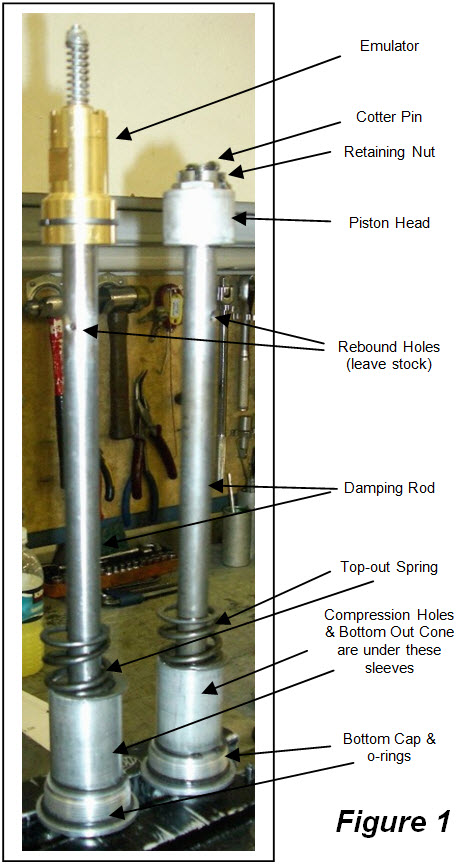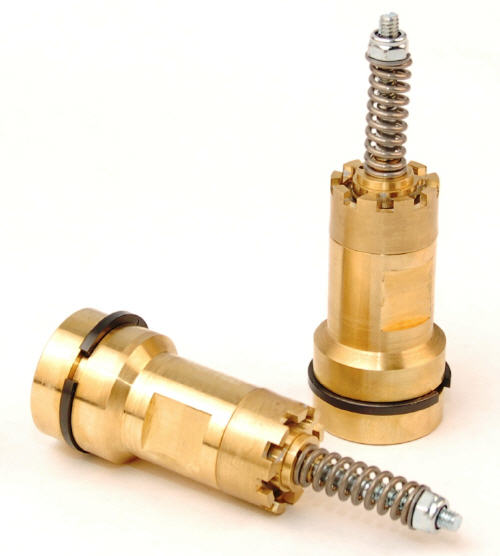8.1 Maico External Fork SpringsEarly 1970s | ||
| In the early 1970s Maico was considered to be one of the best handling motorcycles in the world. The MX bikes had some of the first leading axle forks. They also had external fork springs. This is the only real difficulty to customizing these forks today. Normally Emulators sit on top of the damping rod and are held in with the fork spring. Not so with this fork. Fortunately the solution is a specifically designed Emulator that threads onto the top of the damping rod. The damping rod unscrews from the bottom of the fork leg. | ||
| Sorry we don't have better pics for these forks. If you'd like to help us with this little problem please call. | Remove the piston head from the Damping Rod; Remove the cotter pin & discard. Using a wrench or socket unscrew the top from the damping rod. You may need to use a vise with soft jaws or a shaft holding tool TFSH 32 to hold the damping rod. NO VISE GRIPS! Remove the circlip from the damping rod, it will not be required with the Gold Valve Emulator. | |
Modify the Damping Rod by drilling the existing compression holes at the bottom of the damping rod to 1/4 inch (6 mm) and add two additional 1/4“ holes so you end up with four compression holes (2 sets of 2 holes). When drilling new holes, space them axially (lengthwise) at 10 mm (7/16") increments. Each set of two holes must be perpendicular to the last set so as not to weaken the rod. After drilling, chamfer and deburr the compression holes, inside and out. NOTE: Do not add or enlarge the rebound holes at the top of the damping rod and leave their edges sharp if any exist. | ||
Trim down the top edge of the Bottoming Cone just enough to expose the lower compression holes. Make sure to deburr and chamfer the new edge after cutting. | ||
Install the Emulator. Be sure to setup the Emulator valving according to the DVS Setup Sheet. Thread the Emulator assembly onto the damping rod, apply red loctite to the threads. Use the flats on the Emulator to tighten securely, DO NOT OVERTIGHTEN! | ||
Install the fork fluid. Bleed the fork by pumping it. Set the oil level with the fork completely bottomed. Fill to the top of the ridge where the fork inner narrows down, this is a good starting point. See Standard Emulator Instructions.
| ||


